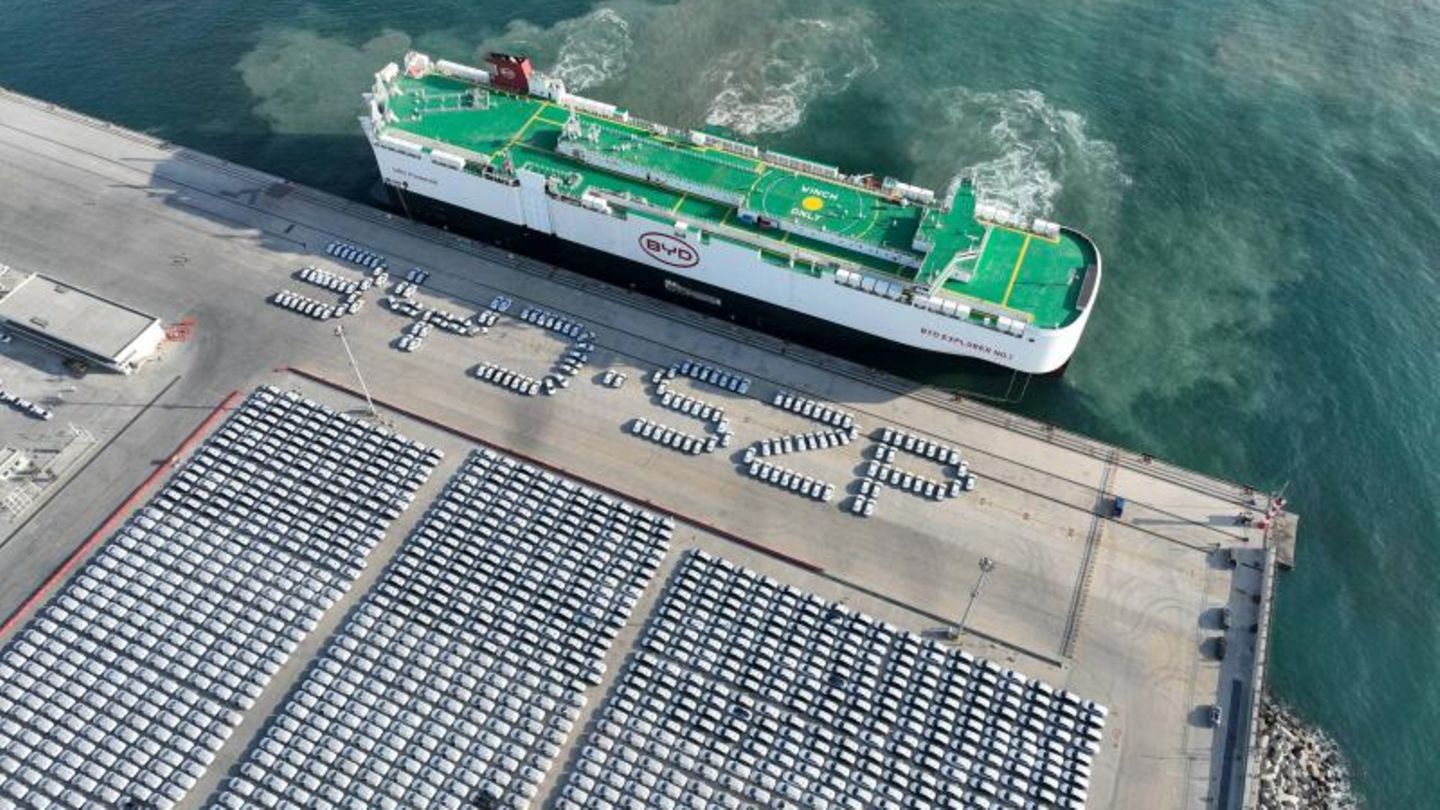The car manufacturer BYD has already demonstrated what it is capable of in China. Now his first freighter is unloading thousands of electric vehicles in Bremerhaven. This increases competition enormously, especially for VW.
This article first appeared at ntv.de
Large car freighters that unload thousands of new cars from all over the world are part of everyday business in Bremerhaven. However, the arrival of the “BYD Explorer” could usher in a new era. The cargo ship is the first of an entire fleet that the world’s largest electric car manufacturer, the Chinese BYD, is having built in order to be able to attack the European market.
The relatively young car brand has already proven what BYD is capable of in its Chinese home market. Still a niche player a few years ago, BYD has dethroned the long-time market leader in China, Volkswagen, in 2023. Unlike Volkswagen, BYD no longer offers pure combustion engines, but is already relying exclusively on plug-in hybrids and purely electrically powered vehicles. At the same time, BYD has overtaken Tesla as the global market leader in the electric segment.
BYD has hardly had a presence in Germany so far
BYD, on the other hand, has barely had a presence in Volkswagen’s hometown; the company only officially entered the German market at the beginning of 2023. The website for Germany currently lists just two dozen dealers across the country. In total, BYD sold 4,000 cars in this country last year – significantly fewer than the “Explorer” alone transported. The car freighter has a capacity of 7,000 vehicles. On his first European tour, he is now unloading around 3,000 cars in Bremen alone.
The company has set the goal of becoming one of the five largest suppliers on the European car market in just a few years. An obstacle to the expansion of BYD and other Chinese manufacturers into Europe are. However, that is likely to change within a few years. In addition to BYD, other car manufacturers such as the state-owned company SAIC – VW’s partner in China – have also commissioned the construction of entire fleets of huge car transporters. Chinese manufacturers are also starting to produce their own products in Europe. BYD already operates a factory for electrically powered buses and plans to also start producing cars in Hungary.
Market leadership like in their homeland is not a realistic goal for the Chinese. But since the European car market, in contrast to the Chinese one, has not been growing for many years, every new market entry is painful for the established providers. Among German car manufacturers, VW in particular is in direct competition with BYD with its mid-range and compact vehicles.
Most difficult phase in VW’s recent history
The boardroom is closely following the expansion of Chinese competition. At a briefing for managers, at which VW brand and group board member Thomas Schäfer is said to have described the situation at Volkswagen overall as “precarious” – and not just because of the increased competition. The new rivals, especially from China, export little or not at all to North America, but are increasingly aiming for Europe: “There is competition here that we have to endure,” quotes Business Insider.
Electric SUV
Kia EV9 in the test: The almost perfect electric car for large families
From Schäfer’s point of view, the report states, VW is facing the most difficult phase in its recent company history. The situation is dramatic because this competition is becoming more intense with the new competition at a time when the global economy is contracting, the willingness to buy, especially for cars, is decreasing and prices are eroding. “There are crazy things going on in China and at Tesla,” Schäfer is said to have said, referring to multiple, sometimes drastic price cuts by competitors.
Schäfer made a dramatic appeal to the managers: “We must try with all our might to position ourselves for the future, there is no pause here.” Specifically, this means that the Wolfsburg-based car company must, above all, continue to reduce costs and increase profitability. According to the report, this includes savings through increased partial retirement, reduction in overtime and staff cuts through severance pay, but also streamlining management and more efficient logistics. Schäfer praised the cost-cutting measures that have already been implemented, but gave those present no illusions that VW still has the biggest challenges ahead of it. “There is no all-clear going forward,” said Schäfer, “on the contrary.”
Source: Stern




